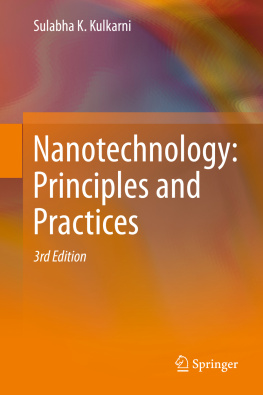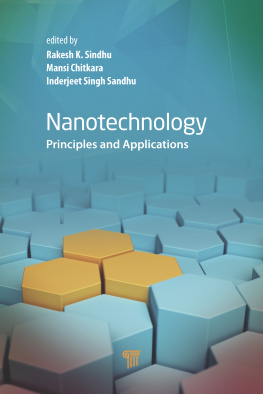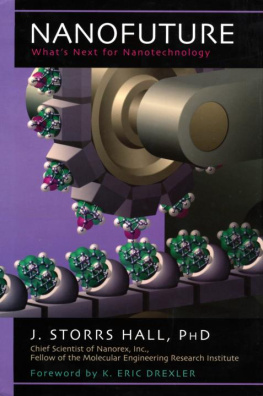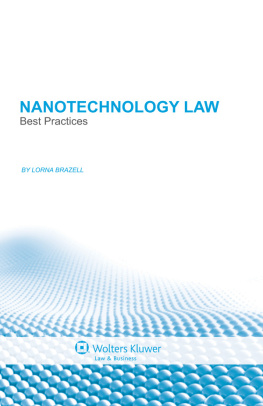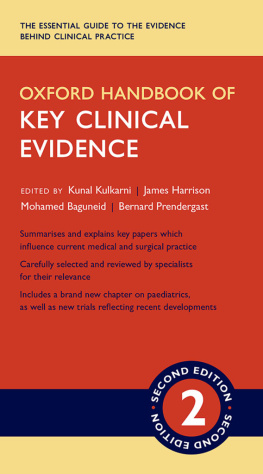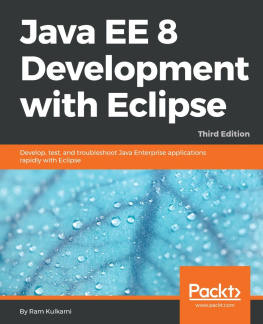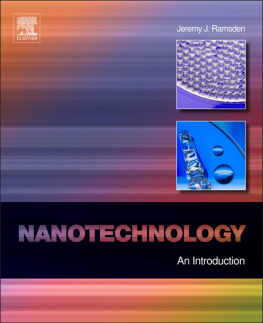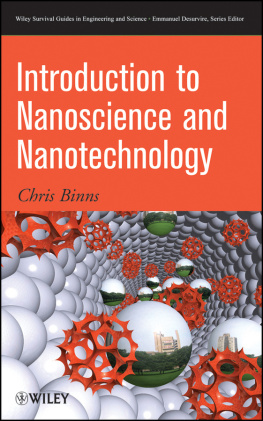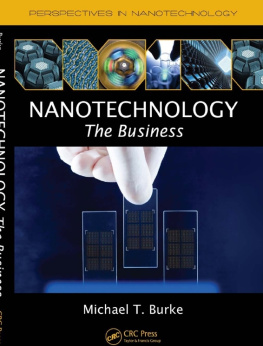Sulabha K. Kulkarni - Nanotechnology: Principles and Practices
Here you can read online Sulabha K. Kulkarni - Nanotechnology: Principles and Practices full text of the book (entire story) in english for free. Download pdf and epub, get meaning, cover and reviews about this ebook. year: 0, publisher: Springer International Publishing, Cham, genre: Children. Description of the work, (preface) as well as reviews are available. Best literature library LitArk.com created for fans of good reading and offers a wide selection of genres:
Romance novel
Science fiction
Adventure
Detective
Science
History
Home and family
Prose
Art
Politics
Computer
Non-fiction
Religion
Business
Children
Humor
Choose a favorite category and find really read worthwhile books. Enjoy immersion in the world of imagination, feel the emotions of the characters or learn something new for yourself, make an fascinating discovery.
- Book:Nanotechnology: Principles and Practices
- Author:
- Publisher:Springer International Publishing, Cham
- Genre:
- Year:0
- Rating:3 / 5
- Favourites:Add to favourites
- Your mark:
- 60
- 1
- 2
- 3
- 4
- 5
Nanotechnology: Principles and Practices: summary, description and annotation
We offer to read an annotation, description, summary or preface (depends on what the author of the book "Nanotechnology: Principles and Practices" wrote himself). If you haven't found the necessary information about the book — write in the comments, we will try to find it.
Nanotechnology: Principles and Practices — read online for free the complete book (whole text) full work
Below is the text of the book, divided by pages. System saving the place of the last page read, allows you to conveniently read the book "Nanotechnology: Principles and Practices" online for free, without having to search again every time where you left off. Put a bookmark, and you can go to the page where you finished reading at any time.
Font size:
Interval:
Bookmark:
- In 1669, Newton proposed that light had corpuscular or particle nature.
- Huygen claimed in 1690 that light had a wave nature.
- Kirchoff and others studied black body radiation around 1860.
- Maxwell proposed (1873) theory of electromagnetic waves.
- In 180304 Young performed double slit experiment, which showed that light had a wave nature.
- In 1887, Heinrich Hertz produced and detected electromagnetic radiation.
- In 1901, Max Planck showed that energy distribution in black body radiation could be explained properly only if one considered that the radiation was quantized or had a particle nature.
- In 1905, Einstein proposed a theory of photoelectric effect which decisively proved that quantum or particle nature was associated with electromagnetic waves.
- Compton effect (1920) could be explained only when particle nature of electromagnetic radiation was considered, supporting Max Plancks and Einsteins theories. Particles of electromagnetic waves were identified as photons.
- De Broglie (1923) argued that if electromagnetic waves were particles (photons) then why not particles have waves associated with them?
- Bohrs atom model (1913) with stationary states (why electrons should have some fixed energies) could be explained with de Broglie hypothesis.
- Heisenberg introduced (1925) Matrix Mechanics.
- Schrdinger equation (1926) gave the firm foundation for de Broglie hypothesis and later explained the electronic structure of atoms, molecules and solids.
- Davisson and Germer showed in 1927 that electrons can be diffracted. Regularly spaced atoms constitute multi-slit analogue of Youngs double slit experiment.
- Heisenberg proposed uncertainty principle in 1928.

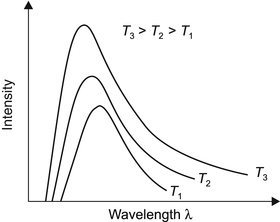
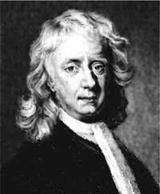
- Laws of Gravity
- Optics and
- Co-foundation of Calculus
- Philosophiae Naturalis Principa Mathematica (1687) and Opticks (1704).
- Philosophiae Naturalis Principa Mathematica, which is often referred to just as Principa, is considered to be one of the best scientific document ever written.
Font size:
Interval:
Bookmark:
Similar books «Nanotechnology: Principles and Practices»
Look at similar books to Nanotechnology: Principles and Practices. We have selected literature similar in name and meaning in the hope of providing readers with more options to find new, interesting, not yet read works.
Discussion, reviews of the book Nanotechnology: Principles and Practices and just readers' own opinions. Leave your comments, write what you think about the work, its meaning or the main characters. Specify what exactly you liked and what you didn't like, and why you think so.

